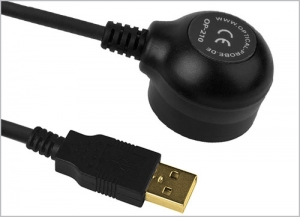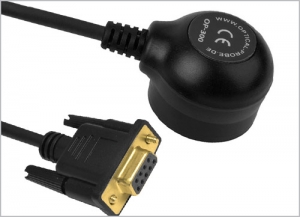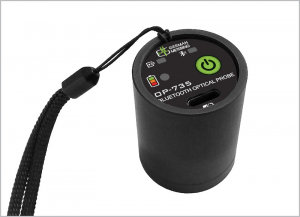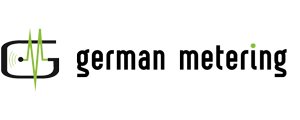Types of Optical Probes, A Comprehensive Guide
Optical probes are essential tools used in a variety of scientific, medical, and industrial applications for measuring, analyzing, and characterizing materials through light. They play a crucial role in fields such as biotechnology, materials science, and environmental monitoring.
What are Optical Probes?
Optical probes are devices that use light to gather information about substances or phenomena. They can detect changes in light properties, such as intensity, wavelength, and phase, to provide insights into the chemical, physical, and biological characteristics of materials. The choice of optical probe often depends on the application, light source, and the type of measurement required.
Common Types of Optical Probes
1. Fiber Optical Probes
Fiber optical probes are widely used for sensing applications because they can transmit light over long distances with minimal loss.
- Applications: Commonly utilized in chemical sensing, temperature measurements, and pressure readings.
- Advantages: Flexibility and versatility allow them to be used in hard-to-reach environments.
2. Spectroscopic Probes
Spectroscopic probes utilize the principles of spectroscopy to identify and analyze materials based on their interaction with light.
- Types:
- UV-Vis Probes: Measure absorption and transmission of ultraviolet and visible light, widely used in chemical analysis.
- Infrared Probes (FTIR): Used for analyzing molecular structures by measuring the absorption of infrared light.
- Applications: Used in laboratories for material characterization, quality control, and environmental monitoring.
3. Confocal Probes
Confocal probes use a focused laser and a pinhole to create high-resolution images of samples. By collecting light from a specific focal plane, they eliminate out-of-focus light, enhancing image clarity.
- Applications: Commonly used in biological imaging, material science, and surface profiling.
- Advantages: Provides detailed 3D images and is effective for studying cellular structures.
4. Laser Doppler Probes
Laser Doppler probes are used to measure the velocity of particles in motion within a fluid. They work on the principle that the frequency of light changes as it is scattered by moving particles.
- Applications: Frequently used in fluid dynamics, biomedical flow measurement, and speed detection.
- Advantages: Non-invasive and highly sensitive, making them ideal for in vivo measurements.
5. Optical Coherence Tomography Probes (OCT)
OCT probes are sophisticated imaging tools that provide cross-sectional images of tissues and materials based on light interference.
- Applications: Widely used in ophthalmology for retinal imaging, cardiology, and cancer diagnostics.
- Advantages: Offers high-resolution images without the need for biopsies, enabling early disease detection.
6. Imaging Probes
Imaging probes are designed to create visual representations of samples, often combined with various imaging techniques, such as fluorescence and reflectance.
- Applications: Common in biological and medical applications, as they allow visualization of cellular and sub-cellular structures. For example, recently it’s using on scanning tooths and modelling them on computer at modern dental clinics.
- Advantages: Greatly enhance the capability to study live cells and complex biological systems.
7. Optical Probes
This type of optical probe is used in industry to communicate between devices.
- Application: Various industry like electricity, water, gas, etc. For example, reading electricity meters by agents to issue bills for subscribers.
- Advantages: Eliminate human error during manual meter reading and submission, high speed meter reading, more meter readings during a day, correction of meter date and time, and setting necessary parameters during the reading process.
Choosing the Right Optical Probe
When selecting an optical probe, consider the following factors:
- Application: Determine the specific measurement or analysis needed.
- Substrate Compatibility: Ensure the probe material is compatible with the sample being tested.
- Sensitivity and Resolution: Assess the required sensitivity and resolution for your application.
- Environmental Conditions: Consider the conditions under which the probe will operate, such as temperature and pressure.
Conclusion
Understanding the various types of optical probes available is crucial for selecting the right tool for your application. Whether you are involved in scientific research, medical diagnostics, or industrial applications, optical probes provide valuable insights into materials and processes. By leveraging the appropriate type of optical probe, you can enhance your data collection and analysis, leading to more informed decisions and innovations in your field.
German Metering has the Optical Probe!
One of the German Metering’s optical probes, The OP-740 has a Bluetooth connection interface, which is suitable for tablets and mobile phones and all android devices with Bluetooth connection availability. It also includes an Android library file for programmers and developers. By implementing this library file in the meter reading application, programmers will be able to easily establish a connection between the Bluetooth optical probe and their application. OP-740 benefits from a very strong magnet that firmly attaches the optical probe to the meter and is also resistant to external light influences other than the infrared wavelength.
Using Optical Probes to Read Meters
Optical Probe is an interface that communicates via infrared waves with a peripheral device such as an electricity meter, water meter, heat meter, gas meter or any other device that has an optical port on it. All devices that support the European standard IEC62056-21 (IEC 1107) Mode E & C and IEC62056-31 will work with it. In addition, it has the ability to send settings for data transmission with all types of IEC meters in transparent mode.
If you need more information to find out how optical probes work, click here to find out!
Meter Reader Android Application
Metis is an android application capable of collecting data from various meter models and types and is used by meter readers or field operators to collect and configure target energy meters in the power grid network.
Metis utilizes android system and brings user friendly environment with powerful core features, enabling meter readers to collect and configure meters fast and efficient. Metis also supports digital data collection other than manual data entry for customers and meters. Being able to communicate with both wired and wireless optical probes, Metis can collect data from meter automatically thus eliminating human error and adding many capabilities like meter configurations to the business.












